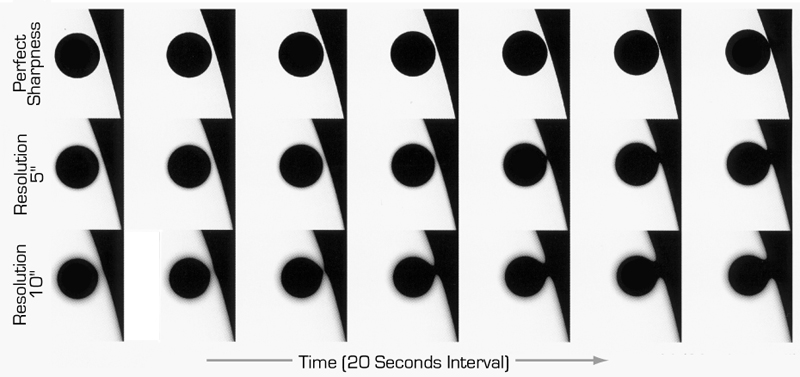A New World Economy
The balance of power will shift to the East as China and India evolve
It may not top the
must-see list of many tourists. But to appreciate Shanghai's ambitious
view of its future, there is no better place than the Urban Planning
Exhibition Hall, a glass-and-metal structure across from People's
Square. The highlight is a scale model bigger than a basketball court
of the entire metropolis -- every skyscraper, house, lane, factory,
dock, and patch of green space -- in the year 2020.
There are white
plastic showpiece towers designed by architects such as I.M. Pei and Sir
Norman Foster. There are immense new industrial parks for autos and
petrochemicals, along with new subway lines, airport runways, ribbons of
expressway, and an elaborate riverfront development, site of the 2010
World Expo. Nine futuristic planned communities for 800,000 residents
each, with generous parks, retail districts, man-made lakes, and nearby
college campuses, rise in the suburbs. The message is clear. Shanghai
already is looking well past its industrial age to its expected
emergence as a global mecca of knowledge workers. "In an information
economy, it is very important to have urban space with a better natural
and social environment," explains Architectural Society of Shanghai
President Zheng Shiling, a key city adviser.
It is easy to dismiss such dreams as bubble-economy hubris -- until you take into account the audacious goals Shanghai already has achieved. Since 1990, when the city still seemed caught in a socialist time warp, Shanghai has erected enough high-rises to fill Manhattan. The once-rundown Pudong district boasts a space-age skyline, some of the world's biggest industrial zones, dozens of research centers, and a bullet train. This is the story of China, where an extraordinary ability to mobilize workers and capital has tripled per capita income in a generation, and has eased 300 million out of poverty. Leaders now are frenetically laying the groundwork for decades of new growth.
INVALUABLE ROLE
Now hop a plane to India. It is hard to tell this is the world's other emerging superpower. Jolting sights of extreme poverty abound even in the business capitals. A lack of subways and a dearth of expressways result in nightmarish traffic.
But visit the office towers and research and development centers sprouting everywhere, and you see the miracle. Here, Indians are playing invaluable roles in the global innovation chain. Motorola, (MOT ) Hewlett-Packard (HPQ ), Cisco Systems (CSCO ), and other tech giants now rely on their Indian teams to devise software platforms and dazzling multimedia features for next-generation devices. Google (GOOG ) principal scientist Krishna Bharat is setting up a Bangalore lab complete with colorful furniture, exercise balls, and a Yamaha organ -- like Google's Mountain View (Calif.) headquarters -- to work on core search-engine technology. Indian engineering houses use 3-D computer simulations to tweak designs of everything from car engines and forklifts to aircraft wings for such clients as General Motors Corp. (GM ) and Boeing Co (BA ). Financial and market-research experts at outfits like B2K, OfficeTiger, and Iris crunch the latest disclosures of blue-chip companies for Wall Street. By 2010 such outsourcing work is expected to quadruple, to $56 billion a year.
Even more exhilarating is the pace of innovation, as tech hubs like Bangalore spawn companies producing their own chip designs, software, and pharmaceuticals. "I find Bangalore to be one of the most exciting places in the world," says Dan Scheinman, Cisco Systems Inc.'s senior vice-president for corporate development. "It is Silicon Valley in 1999." Beyond Bangalore, Indian companies are showing a flair for producing high-quality goods and services at ridiculously low prices, from $50 air flights and crystal-clear 2 cents-a-minute cell-phone service to $2,200 cars and cardiac operations by top surgeons at a fraction of U.S. costs. Some analysts see the beginnings of hypercompetitive multinationals. "Once they learn to sell at Indian prices with world quality, they can compete anywhere," predicts University of Michigan management guru C.K. Prahalad. Adds A. T. Kearney high-tech consultant John Ciacchella: "I don't think U.S. companies realize India is building next-generation service companies."
SIMULTANEOUS TAKEOFFS
China and India. Rarely has the economic ascent of two still relatively poor nations been watched with such a mixture of awe, opportunism, and trepidation. The postwar era witnessed economic miracles in Japan and South Korea. But neither was populous enough to power worldwide growth or change the game in a complete spectrum of industries. China and India, by contrast, possess the weight and dynamism to transform the 21st-century global economy. The closest parallel to their emergence is the saga of 19th-century America, a huge continental economy with a young, driven workforce that grabbed the lead in agriculture, apparel, and the high technologies of the era, such as steam engines, the telegraph, and electric lights.
But in a way, even America's rise falls short in comparison to what's happening now. Never has the world seen the simultaneous, sustained takeoffs of two nations that together account for one-third of the planet's population. For the past two decades, China has been growing at an astounding 9.5% a year, and India by 6%. Given their young populations, high savings, and the sheer amount of catching up they still have to do, most economists figure China and India possess the fundamentals to keep growing in the 7%-to-8% range for decades.
Barring cataclysm, within three decades India should have vaulted over Germany as the world's third-biggest economy. By mid-century, China should have overtaken the U.S. as No. 1. By then, China and India could account for half of global output. Indeed, the troika of China, India, and the U.S. -- the only industrialized nation with significant population growth -- by most projections will dwarf every other economy.
What makes the two giants especially powerful is that they complement each other's strengths. An accelerating trend is that technical and managerial skills in both China and India are becoming more important than cheap assembly labor. China will stay dominant in mass manufacturing, and is one of the few nations building multibillion-dollar electronics and heavy industrial plants. India is a rising power in software, design, services, and precision industry. This raises a provocative question: What if the two nations merge into one giant "Chindia?" Rival political and economic ambitions make that unlikely. But if their industries truly collaborate, "they would take over the world tech industry," predicts Forrester Research Inc (FORR ). analyst Navi Radjou.
In a practical sense, the yin and yang of these immense workforces already are converging. True, annual trade between the two economies is just $14 billion. But thanks to the Internet and plunging telecom costs, multinationals are having their goods built in China with software and circuitry designed in India. As interactive design technology makes it easier to perfect virtual 3-D prototypes of everything from telecom routers to turbine generators on PCs, the distance between India's low-cost laboratories and China's low-cost factories shrinks by the month. Managers in the vanguard of globalization's new wave say the impact will be nothing less than explosive. "In a few years you'll see most companies unleashing this massive productivity surge," predicts Infosys Technologies (INFY ) CEO Nandan M. Nilekani.
To globalization's skeptics, however, what's good for Corporate America translates into layoffs and lower pay for workers. Little wonder the West is suffering from future shock. Each new Chinese corporate takeover bid or revelation of a major Indian outsourcing deal elicits howls of protest by U.S. politicians. Washington think tanks are publishing thick white papers charting China's rapid progress in microelectronics, nanotech, and aerospace -- and painting dark scenarios about what it means for America's global leadership.
Such alarmism is understandable. But the U.S. and other established powers will have to learn to make room for China and India. For in almost every dimension -- as consumer markets, investors, producers, and users of energy and commodities -- they will be 21st-century heavyweights. The growing economic might will carry into geopolitics as well. China and India are more assertively pressing their interests in the Middle East and Africa, and China's military will likely challenge U.S. dominance in the Pacific.
One implication is that the balance of power in many technologies will likely move from West to East. An obvious reason is that China and India graduate a combined half a million engineers and scientists a year, vs. 60,000 in the U.S. In life sciences, projects the McKinsey Global Institute, the total number of young researchers in both nations will rise by 35%, to 1.6 million by 2008. The U.S. supply will drop by 11%, to 760,000. As most Western scientists will tell you, China and India already are making important contributions in medicine and materials that will help everyone. Because these nations can throw more brains at technical problems at a fraction of the cost, their contributions to innovation will grow.
CONSUMERS RISING
American business isn't just shifting research work because Indian and Chinese brains are young, cheap, and plentiful. In many cases, these engineers combine skills -- mastery of the latest software tools, a knack for complex mathematical algorithms, and fluency in new multimedia technologies -- that often surpass those of their American counterparts. As Cisco's Scheinman puts it: "We came to India for the costs, we stayed for the quality, and we're now investing for the innovation."
A rising consumer class also will drive innovation. This year, China's passenger car market is expected to reach 3 million, No. 3 in the world. China already has the world's biggest base of cell-phone subscribers -- 350 million -- and that is expected to near 600 million by 2009. In two years, China should overtake the U.S. in homes connected to broadband. Less noticed is that India's consumer market is on the same explosive trajectory as China five years ago. Since 2000, the number of cellular subscribers has rocketed from 5.6 million to 55 million.
What's more, Chinese and Indian consumers and companies now demand the latest technologies and features. Studies show the attitudes and aspirations of today's young Chinese and Indians resemble those of Americans a few decades ago. Surveys of thousands of young adults in both nations by marketing firm Grey Global Group found they are overwhelmingly optimistic about the future, believe success is in their hands, and view products as status symbols. In China, it's fashionable for the upwardly mobile to switch high-end cell phones every three months, says Josh Li, managing director of Grey's Beijing office, because an old model suggests "you are not getting ahead and updated." That means these nations will be huge proving grounds for next-generation multimedia gizmos, networking equipment, and wireless Web services, and will play a greater role in setting global standards. In consumer electronics, "we will see China in a few years going from being a follower to a leader in defining consumer-electronics trends," predicts Philips Semiconductors (PHG ) Executive Vice-President Leon Husson.
For all the huge advantages they now enjoy, India and China cannot assume their role as new superpowers is assured. Today, China and India account for a mere 6% of global gross domestic product -- half that of Japan. They must keep growing rapidly just to provide jobs for tens of millions entering the workforce annually, and to keep many millions more from crashing back into poverty. Both nations must confront ecological degradation that's as obvious as the smog shrouding Shanghai and Bombay, and face real risks of social strife, war, and financial crisis.
Increasingly, such problems will be the world's problems. Also, with wages rising fast, especially in many skilled areas, the cheap labor edge won't last forever. Both nations will go through many boom and harrowing bust cycles. And neither country is yet producing companies like Samsung, Nokia (NOK ), or Toyota (TM ) that put it all together, developing, making, and marketing world-beating products.
Both countries, however, have survived earlier crises and possess immense untapped potential. In China, serious development only now is reaching the 800 million people in rural areas, where per capita annual income is just $354. In areas outside major cities, wages are as little as 45 cents an hour. "This is why China can have another 20 years of high-speed growth," contends Beijing University economist Hai Wen.
Very impressive. But India's long-term potential may be even higher. Due to its one-child policy, China's working-age population will peak at 1 billion in 2015 and then shrink steadily. China then will have to provide for a graying population that has limited retirement benefits. India has nearly 500 million people under age 19 and higher fertility rates. By mid-century, India is expected to have 1.6 billion people -- and 220 million more workers than China. That could be a source for instability, but a great advantage for growth if the government can provide education and opportunity for India's masses. New Delhi just now is pushing to open its power, telecom, commercial real estate and retail sectors to foreigners. These industries could lure big capital inflows. "The pace of institutional changes and industries being liberalized is phenomenal," says Chief Economist William T. Wilson of consultancy Keystone Business Intelligence India. "I believe India has a better model than China, and over time will surpass it in growth."
For its part, China has yet to prove it can go beyond forced-march industrialization. China directs massive investment into public works and factories, a wildly successful formula for rapid growth and job creation. But considering its massive manufacturing output, China is surprisingly weak in innovation. A full 57% of exports are from foreign-invested factories, and China underachieves in software, even with 35 software colleges and plans to graduate 200,000 software engineers a year. It's not for lack of genius. Microsoft Corp.'s (MSFT ) 180-engineer R&D lab in Beijing, for example, is one of the world's most productive sources of innovation in computer graphics and language simulation.
While China's big state-run R&D institutes are close to the cutting edge at the theoretical level, they have yet to yield many commercial breakthroughs. "China has a lot of capability," says Microsoft Chief Technology Officer Craig Mundie. "But when you look under the covers, there is not a lot of collaboration with industry." The lack of intellectual property protection, and Beijing's heavy role in building up its own tech companies, make many other multinationals leery of doing serious R&D in China.
China also is hugely wasteful. Its 9.5% growth rate in 2004 is less impressive when you consider that $850 billion -- half of GDP -- was plowed into already-glutted sectors like crude steel, vehicles, and office buildings. Its factories burn fuel five times less efficiently than in the West, and more than 20% of bank loans are bad. Two-thirds of China's 1,300 listed companies don't earn back their true cost of capital, estimates Beijing National Accounting Institute President Chen Xiaoyue. "We build the roads and industrial parks, but we sacrifice a lot," Chen says.
India, by contrast, has had to develop with scarcity. It gets scant foreign investment, and has no room to waste fuel and materials like China. India also has Western legal institutions, a modern stock market, and private banks and corporations. As a result, it is far more capital-efficient. A BusinessWeek analysis of Standard & Poor's (MHP ) Compustat data on 346 top listed companies in both nations shows Indian corporations have achieved higher returns on equity and invested capital in the past five years in industries from autos to food products. The average Indian company posted a 16.7% return on capital in 2004, vs. 12.8% in China.
SMALL-BATCH EXPERTISE
The burning question is whether India can replicate China's mass manufacturing achievement. India's info-tech services industry, successful as it is, employs fewer than 1 million people. But 200 million Indians subsist on $1 a day or less. Export manufacturing is one of India's best hopes of generating millions of new jobs.
India has sophisticated manufacturing knowhow. Tata Steel is among the world's most-efficient producers. The country boasts several top precision auto parts companies, such as Bharat Forge Ltd. The world's biggest supplier of chassis parts to major auto makers, it employs 1,200 engineers at its heavily automated Pune plant. India's forte is small-batch production of high-value goods requiring lots of engineering, such as power generators for Cummins Inc. (CMI ) and core components for General Electric Co. (GE ) CAT scanners.
What holds India back are bureaucratic red tape, rigid labor laws, and its inability to build infrastructure fast enough. There are hopeful signs. Nokia Corp. is building a major campus to make cell phones in Madras, and South Korea's Pohang Iron & Steel Co. plans a $12 billion complex by 2016 in Orissa state. But it will take India many years to build the highways, power plants, and airports needed to rival China in mass manufacturing. With Beijing now pushing software and pledging intellectual property rights protection, some Indians fret design work will shift to China to be closer to factories. "The question is whether China can move from manufacturing to services faster than we can solve our infrastructure bottlenecks," says President Aravind Melligeri of Bangalore-based QuEST, whose 700 engineers design gas turbines, aircraft engines, and medical gear for GE and other clients.
However the race plays out, Corporate America has little choice but to be engaged -- heavily. Motorola illustrates the value of leveraging both nations to lower costs and speed up development. Most of its hardware is assembled and partly designed in China. Its R&D center in Bangalore devises about 40% of the software in its new phones. The Bangalore team developed the multimedia software and user interfaces in the hot Razr cell phone. Now, they are working on phones that display and send live video, stream movies from the Web, or route incoming calls to voicemail when you are shifting gears in a car. "This is a very, very critical, state-of-the-art resource for Motorola," says Motorola South Asia President Amit Sharma.
Companies like Motorola realize they must succeed in China and India at many levels simultaneously to stay competitive. That requires strategies for winning consumers, recruiting and managing R&D and professional talent, and skillfully sourcing from factories. "Over the next few years, you will see a dramatic gap opening between companies," predicts Jim Hemerling, who runs Boston Consulting Group's Shanghai practice. "It will be between those who get it and are fully mobilized in China and India, and those that are still pondering."
In the coming decades, China and India will disrupt workforces, industries, companies, and markets in ways that we can barely begin to imagine. The upheaval will test America's commitment to the global trade system, and shake its confidence. In the 19th century, Europe went through a similar trauma when it realized a new giant -- the U.S. -- had arrived. "It is up to America to manage its own expectation of China and India as either a threat or opportunity," says corporate strategist Kenichi Ohmae. "America should be as open-minded as Europe was 100 years ago." How these Asian giants integrate with the rest of the world will largely shape the 21st-century global economy.
It is easy to dismiss such dreams as bubble-economy hubris -- until you take into account the audacious goals Shanghai already has achieved. Since 1990, when the city still seemed caught in a socialist time warp, Shanghai has erected enough high-rises to fill Manhattan. The once-rundown Pudong district boasts a space-age skyline, some of the world's biggest industrial zones, dozens of research centers, and a bullet train. This is the story of China, where an extraordinary ability to mobilize workers and capital has tripled per capita income in a generation, and has eased 300 million out of poverty. Leaders now are frenetically laying the groundwork for decades of new growth.
INVALUABLE ROLE
Now hop a plane to India. It is hard to tell this is the world's other emerging superpower. Jolting sights of extreme poverty abound even in the business capitals. A lack of subways and a dearth of expressways result in nightmarish traffic.
But visit the office towers and research and development centers sprouting everywhere, and you see the miracle. Here, Indians are playing invaluable roles in the global innovation chain. Motorola, (MOT ) Hewlett-Packard (HPQ ), Cisco Systems (CSCO ), and other tech giants now rely on their Indian teams to devise software platforms and dazzling multimedia features for next-generation devices. Google (GOOG ) principal scientist Krishna Bharat is setting up a Bangalore lab complete with colorful furniture, exercise balls, and a Yamaha organ -- like Google's Mountain View (Calif.) headquarters -- to work on core search-engine technology. Indian engineering houses use 3-D computer simulations to tweak designs of everything from car engines and forklifts to aircraft wings for such clients as General Motors Corp. (GM ) and Boeing Co (BA ). Financial and market-research experts at outfits like B2K, OfficeTiger, and Iris crunch the latest disclosures of blue-chip companies for Wall Street. By 2010 such outsourcing work is expected to quadruple, to $56 billion a year.
Even more exhilarating is the pace of innovation, as tech hubs like Bangalore spawn companies producing their own chip designs, software, and pharmaceuticals. "I find Bangalore to be one of the most exciting places in the world," says Dan Scheinman, Cisco Systems Inc.'s senior vice-president for corporate development. "It is Silicon Valley in 1999." Beyond Bangalore, Indian companies are showing a flair for producing high-quality goods and services at ridiculously low prices, from $50 air flights and crystal-clear 2 cents-a-minute cell-phone service to $2,200 cars and cardiac operations by top surgeons at a fraction of U.S. costs. Some analysts see the beginnings of hypercompetitive multinationals. "Once they learn to sell at Indian prices with world quality, they can compete anywhere," predicts University of Michigan management guru C.K. Prahalad. Adds A. T. Kearney high-tech consultant John Ciacchella: "I don't think U.S. companies realize India is building next-generation service companies."
SIMULTANEOUS TAKEOFFS
China and India. Rarely has the economic ascent of two still relatively poor nations been watched with such a mixture of awe, opportunism, and trepidation. The postwar era witnessed economic miracles in Japan and South Korea. But neither was populous enough to power worldwide growth or change the game in a complete spectrum of industries. China and India, by contrast, possess the weight and dynamism to transform the 21st-century global economy. The closest parallel to their emergence is the saga of 19th-century America, a huge continental economy with a young, driven workforce that grabbed the lead in agriculture, apparel, and the high technologies of the era, such as steam engines, the telegraph, and electric lights.
But in a way, even America's rise falls short in comparison to what's happening now. Never has the world seen the simultaneous, sustained takeoffs of two nations that together account for one-third of the planet's population. For the past two decades, China has been growing at an astounding 9.5% a year, and India by 6%. Given their young populations, high savings, and the sheer amount of catching up they still have to do, most economists figure China and India possess the fundamentals to keep growing in the 7%-to-8% range for decades.
Barring cataclysm, within three decades India should have vaulted over Germany as the world's third-biggest economy. By mid-century, China should have overtaken the U.S. as No. 1. By then, China and India could account for half of global output. Indeed, the troika of China, India, and the U.S. -- the only industrialized nation with significant population growth -- by most projections will dwarf every other economy.
What makes the two giants especially powerful is that they complement each other's strengths. An accelerating trend is that technical and managerial skills in both China and India are becoming more important than cheap assembly labor. China will stay dominant in mass manufacturing, and is one of the few nations building multibillion-dollar electronics and heavy industrial plants. India is a rising power in software, design, services, and precision industry. This raises a provocative question: What if the two nations merge into one giant "Chindia?" Rival political and economic ambitions make that unlikely. But if their industries truly collaborate, "they would take over the world tech industry," predicts Forrester Research Inc (FORR ). analyst Navi Radjou.
In a practical sense, the yin and yang of these immense workforces already are converging. True, annual trade between the two economies is just $14 billion. But thanks to the Internet and plunging telecom costs, multinationals are having their goods built in China with software and circuitry designed in India. As interactive design technology makes it easier to perfect virtual 3-D prototypes of everything from telecom routers to turbine generators on PCs, the distance between India's low-cost laboratories and China's low-cost factories shrinks by the month. Managers in the vanguard of globalization's new wave say the impact will be nothing less than explosive. "In a few years you'll see most companies unleashing this massive productivity surge," predicts Infosys Technologies (INFY ) CEO Nandan M. Nilekani.
To globalization's skeptics, however, what's good for Corporate America translates into layoffs and lower pay for workers. Little wonder the West is suffering from future shock. Each new Chinese corporate takeover bid or revelation of a major Indian outsourcing deal elicits howls of protest by U.S. politicians. Washington think tanks are publishing thick white papers charting China's rapid progress in microelectronics, nanotech, and aerospace -- and painting dark scenarios about what it means for America's global leadership.
Such alarmism is understandable. But the U.S. and other established powers will have to learn to make room for China and India. For in almost every dimension -- as consumer markets, investors, producers, and users of energy and commodities -- they will be 21st-century heavyweights. The growing economic might will carry into geopolitics as well. China and India are more assertively pressing their interests in the Middle East and Africa, and China's military will likely challenge U.S. dominance in the Pacific.
One implication is that the balance of power in many technologies will likely move from West to East. An obvious reason is that China and India graduate a combined half a million engineers and scientists a year, vs. 60,000 in the U.S. In life sciences, projects the McKinsey Global Institute, the total number of young researchers in both nations will rise by 35%, to 1.6 million by 2008. The U.S. supply will drop by 11%, to 760,000. As most Western scientists will tell you, China and India already are making important contributions in medicine and materials that will help everyone. Because these nations can throw more brains at technical problems at a fraction of the cost, their contributions to innovation will grow.
CONSUMERS RISING
American business isn't just shifting research work because Indian and Chinese brains are young, cheap, and plentiful. In many cases, these engineers combine skills -- mastery of the latest software tools, a knack for complex mathematical algorithms, and fluency in new multimedia technologies -- that often surpass those of their American counterparts. As Cisco's Scheinman puts it: "We came to India for the costs, we stayed for the quality, and we're now investing for the innovation."
A rising consumer class also will drive innovation. This year, China's passenger car market is expected to reach 3 million, No. 3 in the world. China already has the world's biggest base of cell-phone subscribers -- 350 million -- and that is expected to near 600 million by 2009. In two years, China should overtake the U.S. in homes connected to broadband. Less noticed is that India's consumer market is on the same explosive trajectory as China five years ago. Since 2000, the number of cellular subscribers has rocketed from 5.6 million to 55 million.
What's more, Chinese and Indian consumers and companies now demand the latest technologies and features. Studies show the attitudes and aspirations of today's young Chinese and Indians resemble those of Americans a few decades ago. Surveys of thousands of young adults in both nations by marketing firm Grey Global Group found they are overwhelmingly optimistic about the future, believe success is in their hands, and view products as status symbols. In China, it's fashionable for the upwardly mobile to switch high-end cell phones every three months, says Josh Li, managing director of Grey's Beijing office, because an old model suggests "you are not getting ahead and updated." That means these nations will be huge proving grounds for next-generation multimedia gizmos, networking equipment, and wireless Web services, and will play a greater role in setting global standards. In consumer electronics, "we will see China in a few years going from being a follower to a leader in defining consumer-electronics trends," predicts Philips Semiconductors (PHG ) Executive Vice-President Leon Husson.
For all the huge advantages they now enjoy, India and China cannot assume their role as new superpowers is assured. Today, China and India account for a mere 6% of global gross domestic product -- half that of Japan. They must keep growing rapidly just to provide jobs for tens of millions entering the workforce annually, and to keep many millions more from crashing back into poverty. Both nations must confront ecological degradation that's as obvious as the smog shrouding Shanghai and Bombay, and face real risks of social strife, war, and financial crisis.
Increasingly, such problems will be the world's problems. Also, with wages rising fast, especially in many skilled areas, the cheap labor edge won't last forever. Both nations will go through many boom and harrowing bust cycles. And neither country is yet producing companies like Samsung, Nokia (NOK ), or Toyota (TM ) that put it all together, developing, making, and marketing world-beating products.
Both countries, however, have survived earlier crises and possess immense untapped potential. In China, serious development only now is reaching the 800 million people in rural areas, where per capita annual income is just $354. In areas outside major cities, wages are as little as 45 cents an hour. "This is why China can have another 20 years of high-speed growth," contends Beijing University economist Hai Wen.
Very impressive. But India's long-term potential may be even higher. Due to its one-child policy, China's working-age population will peak at 1 billion in 2015 and then shrink steadily. China then will have to provide for a graying population that has limited retirement benefits. India has nearly 500 million people under age 19 and higher fertility rates. By mid-century, India is expected to have 1.6 billion people -- and 220 million more workers than China. That could be a source for instability, but a great advantage for growth if the government can provide education and opportunity for India's masses. New Delhi just now is pushing to open its power, telecom, commercial real estate and retail sectors to foreigners. These industries could lure big capital inflows. "The pace of institutional changes and industries being liberalized is phenomenal," says Chief Economist William T. Wilson of consultancy Keystone Business Intelligence India. "I believe India has a better model than China, and over time will surpass it in growth."
For its part, China has yet to prove it can go beyond forced-march industrialization. China directs massive investment into public works and factories, a wildly successful formula for rapid growth and job creation. But considering its massive manufacturing output, China is surprisingly weak in innovation. A full 57% of exports are from foreign-invested factories, and China underachieves in software, even with 35 software colleges and plans to graduate 200,000 software engineers a year. It's not for lack of genius. Microsoft Corp.'s (MSFT ) 180-engineer R&D lab in Beijing, for example, is one of the world's most productive sources of innovation in computer graphics and language simulation.
While China's big state-run R&D institutes are close to the cutting edge at the theoretical level, they have yet to yield many commercial breakthroughs. "China has a lot of capability," says Microsoft Chief Technology Officer Craig Mundie. "But when you look under the covers, there is not a lot of collaboration with industry." The lack of intellectual property protection, and Beijing's heavy role in building up its own tech companies, make many other multinationals leery of doing serious R&D in China.
China also is hugely wasteful. Its 9.5% growth rate in 2004 is less impressive when you consider that $850 billion -- half of GDP -- was plowed into already-glutted sectors like crude steel, vehicles, and office buildings. Its factories burn fuel five times less efficiently than in the West, and more than 20% of bank loans are bad. Two-thirds of China's 1,300 listed companies don't earn back their true cost of capital, estimates Beijing National Accounting Institute President Chen Xiaoyue. "We build the roads and industrial parks, but we sacrifice a lot," Chen says.
India, by contrast, has had to develop with scarcity. It gets scant foreign investment, and has no room to waste fuel and materials like China. India also has Western legal institutions, a modern stock market, and private banks and corporations. As a result, it is far more capital-efficient. A BusinessWeek analysis of Standard & Poor's (MHP ) Compustat data on 346 top listed companies in both nations shows Indian corporations have achieved higher returns on equity and invested capital in the past five years in industries from autos to food products. The average Indian company posted a 16.7% return on capital in 2004, vs. 12.8% in China.
SMALL-BATCH EXPERTISE
The burning question is whether India can replicate China's mass manufacturing achievement. India's info-tech services industry, successful as it is, employs fewer than 1 million people. But 200 million Indians subsist on $1 a day or less. Export manufacturing is one of India's best hopes of generating millions of new jobs.
India has sophisticated manufacturing knowhow. Tata Steel is among the world's most-efficient producers. The country boasts several top precision auto parts companies, such as Bharat Forge Ltd. The world's biggest supplier of chassis parts to major auto makers, it employs 1,200 engineers at its heavily automated Pune plant. India's forte is small-batch production of high-value goods requiring lots of engineering, such as power generators for Cummins Inc. (CMI ) and core components for General Electric Co. (GE ) CAT scanners.
What holds India back are bureaucratic red tape, rigid labor laws, and its inability to build infrastructure fast enough. There are hopeful signs. Nokia Corp. is building a major campus to make cell phones in Madras, and South Korea's Pohang Iron & Steel Co. plans a $12 billion complex by 2016 in Orissa state. But it will take India many years to build the highways, power plants, and airports needed to rival China in mass manufacturing. With Beijing now pushing software and pledging intellectual property rights protection, some Indians fret design work will shift to China to be closer to factories. "The question is whether China can move from manufacturing to services faster than we can solve our infrastructure bottlenecks," says President Aravind Melligeri of Bangalore-based QuEST, whose 700 engineers design gas turbines, aircraft engines, and medical gear for GE and other clients.
However the race plays out, Corporate America has little choice but to be engaged -- heavily. Motorola illustrates the value of leveraging both nations to lower costs and speed up development. Most of its hardware is assembled and partly designed in China. Its R&D center in Bangalore devises about 40% of the software in its new phones. The Bangalore team developed the multimedia software and user interfaces in the hot Razr cell phone. Now, they are working on phones that display and send live video, stream movies from the Web, or route incoming calls to voicemail when you are shifting gears in a car. "This is a very, very critical, state-of-the-art resource for Motorola," says Motorola South Asia President Amit Sharma.
Companies like Motorola realize they must succeed in China and India at many levels simultaneously to stay competitive. That requires strategies for winning consumers, recruiting and managing R&D and professional talent, and skillfully sourcing from factories. "Over the next few years, you will see a dramatic gap opening between companies," predicts Jim Hemerling, who runs Boston Consulting Group's Shanghai practice. "It will be between those who get it and are fully mobilized in China and India, and those that are still pondering."
In the coming decades, China and India will disrupt workforces, industries, companies, and markets in ways that we can barely begin to imagine. The upheaval will test America's commitment to the global trade system, and shake its confidence. In the 19th century, Europe went through a similar trauma when it realized a new giant -- the U.S. -- had arrived. "It is up to America to manage its own expectation of China and India as either a threat or opportunity," says corporate strategist Kenichi Ohmae. "America should be as open-minded as Europe was 100 years ago." How these Asian giants integrate with the rest of the world will largely shape the 21st-century global economy.























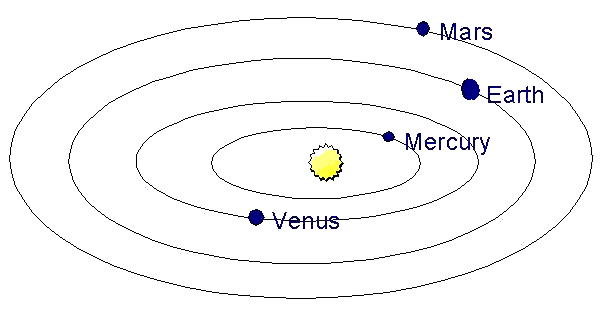
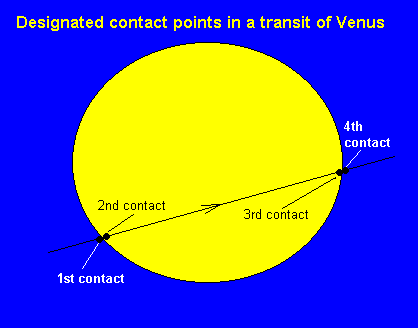
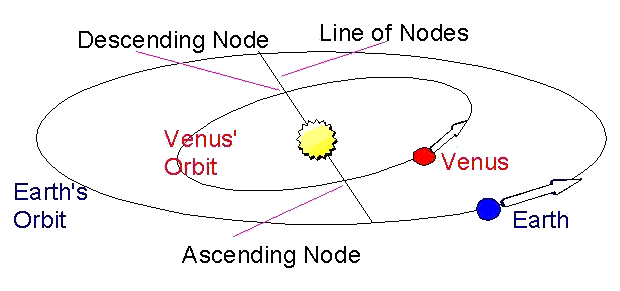
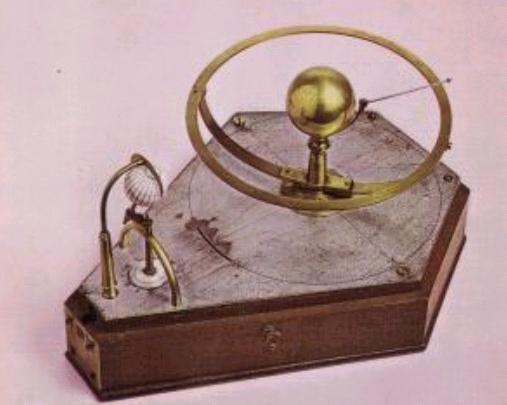

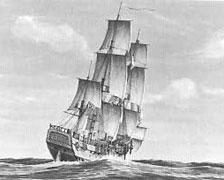
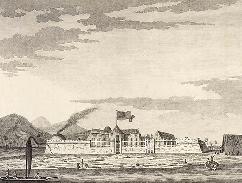

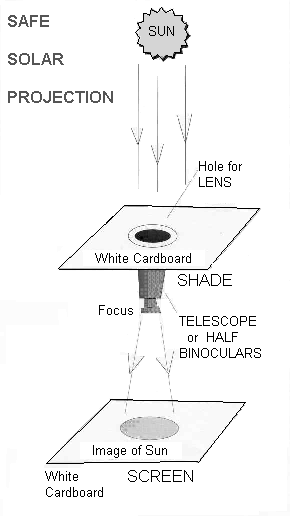
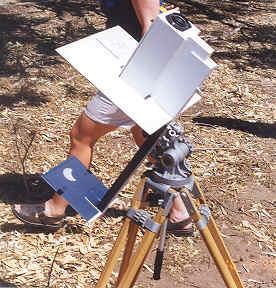
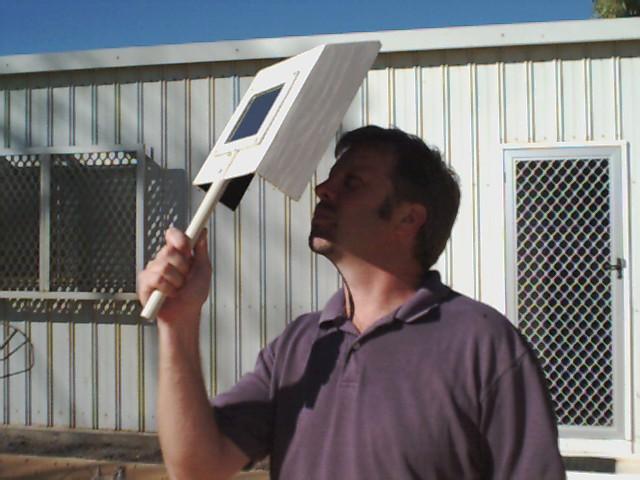
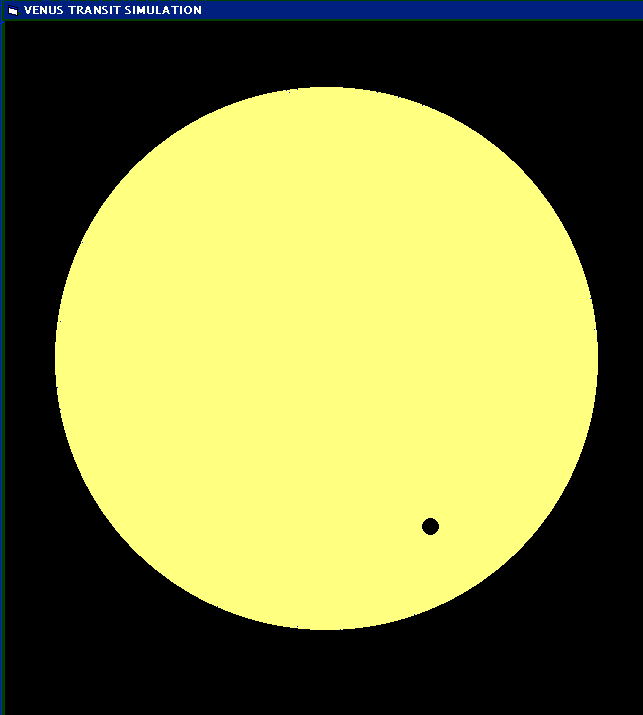
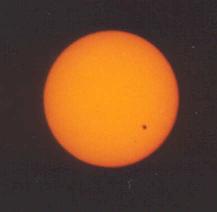
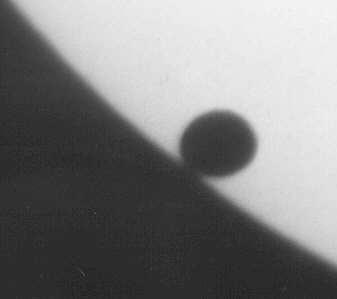
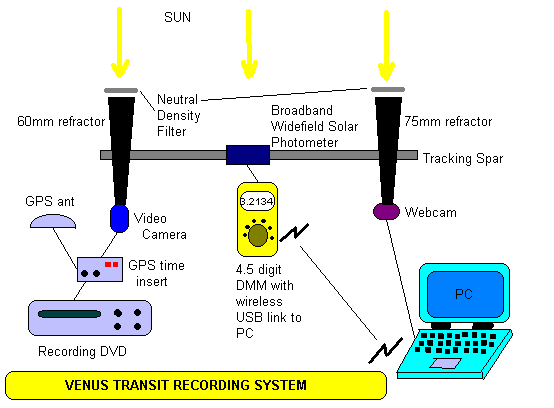
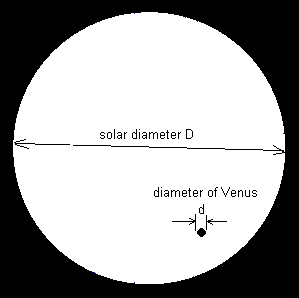 The ratio of the apparent Venusian to Solar diameters is d/D = 1/32.
The ratio of the apparent Venusian to Solar diameters is d/D = 1/32.
 There
are four distinct stages of the transit: when Venus starts to move unto
the solar disk (1) there will become visible a small black dent on the
solar limb, which will grow larger when time passes by. After nearly 18
minutes, the disk of Venus is on the solar disk in its entirety (2),
touching the solar limb on the inside. From then on Venus parades in
about seven hours to the other side of the solar disk, where the planet
will touch the solar limb first on the inside (3). Just 18 minutes later
the shadow of Venus will have left the solar disk once more (4) – the
transit is over.
There
are four distinct stages of the transit: when Venus starts to move unto
the solar disk (1) there will become visible a small black dent on the
solar limb, which will grow larger when time passes by. After nearly 18
minutes, the disk of Venus is on the solar disk in its entirety (2),
touching the solar limb on the inside. From then on Venus parades in
about seven hours to the other side of the solar disk, where the planet
will touch the solar limb first on the inside (3). Just 18 minutes later
the shadow of Venus will have left the solar disk once more (4) – the
transit is over.








